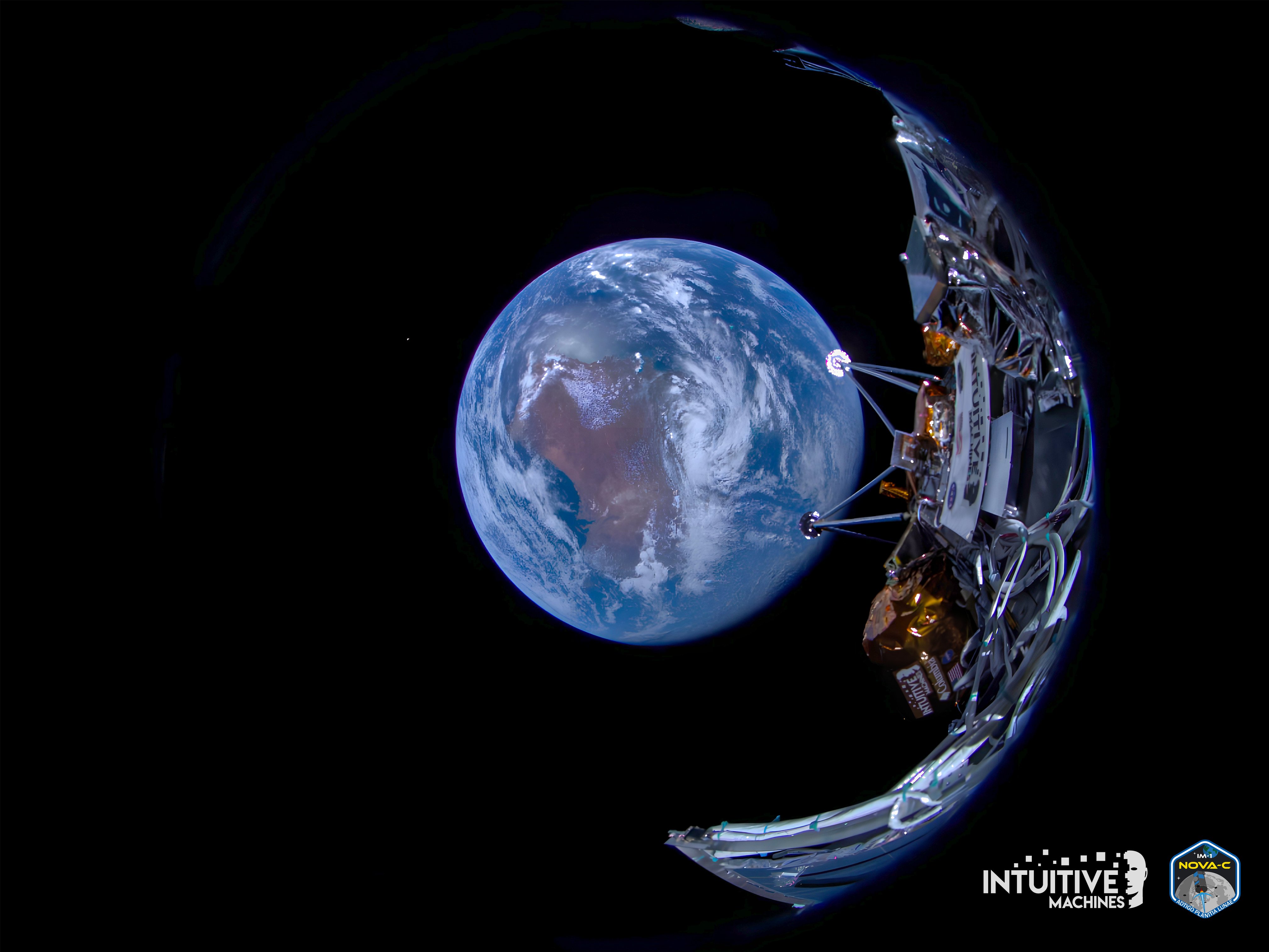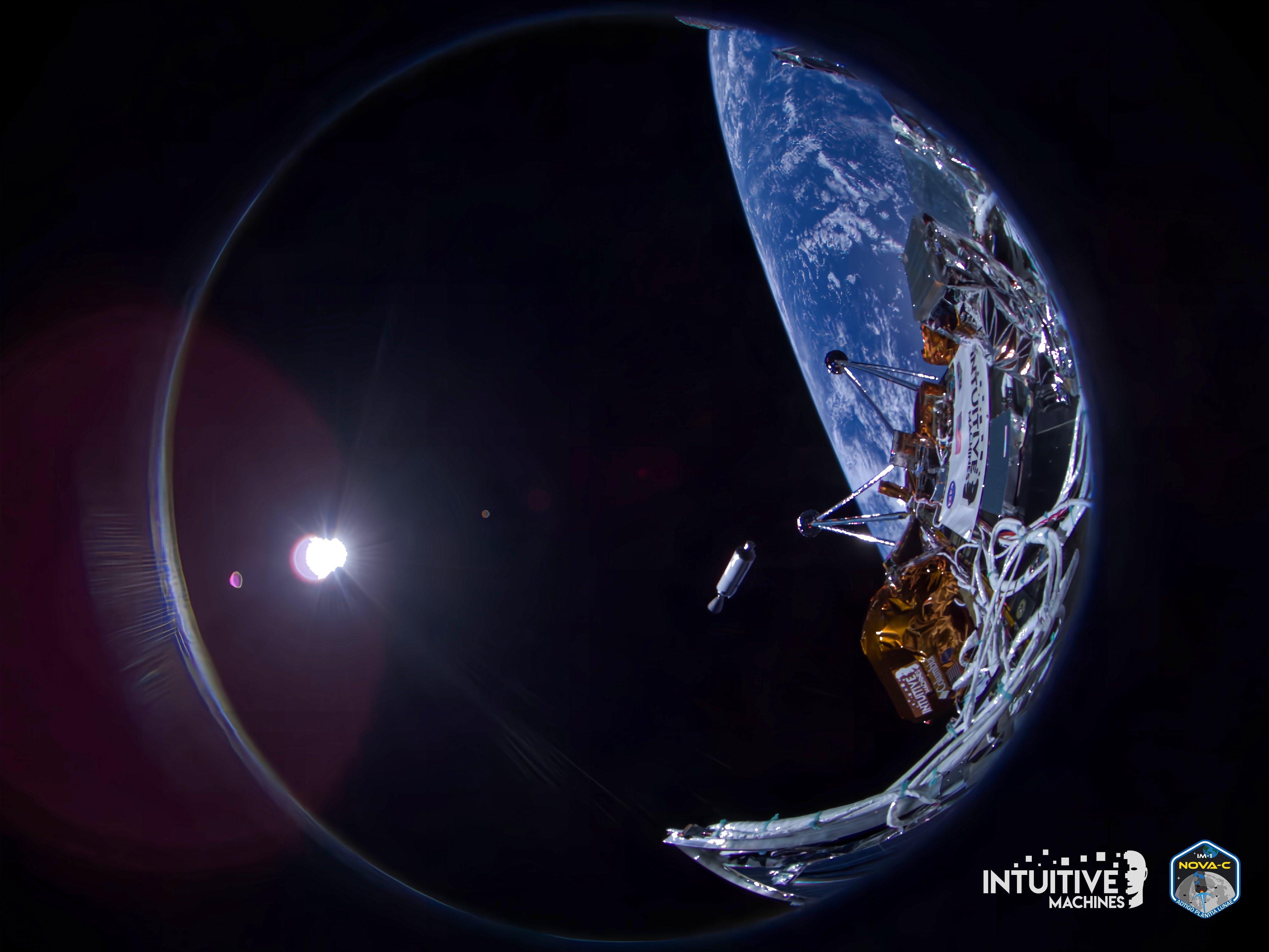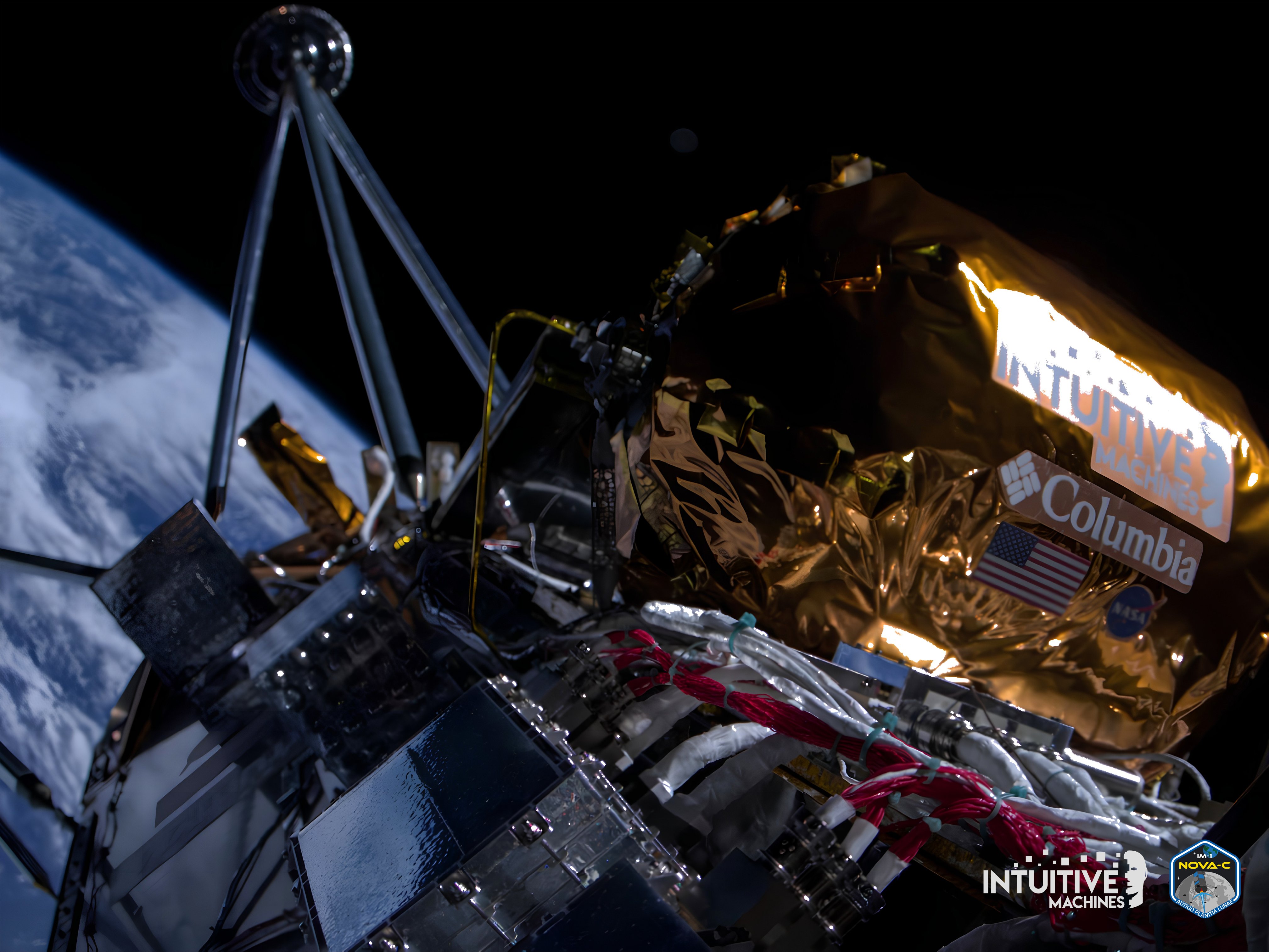
Intuitive Machines’ Odysseus robotic spacecraft took a few selfies with the Earth shortly after its launch on February 15 on a SpaceX Falcon 9 rocket – and we can all see them.
“Intuitive Machines successfully transmitted the first images of the IM-1 mission to Earth on February 16, 2024. The images were taken shortly after separation from SpaceX’s second stage during the company’s first trip to the moon as part of NASA’s CLPS initiative.” the Houston-based company wrote in a post on X on Saturday (February 17), sharing four photos.
Intuitive Machines successfully transmitted its first IM-1 mission images to Earth on February 16, 2024. The images were captured shortly after separation from @SpaceX's second stage on Intuitive Machines’ first journey to the Moon under @NASA's CLPS initiative. pic.twitter.com/9LccL6q5tF
— Intuitive Machines (@Int_Machines) February 17, 2024


CLPS (Commercial Lunar Payload Services) is a commercial lunar cargo services program that places the agency’s scientific instruments on private robotic lunar rovers such as Odysseus. These instruments are designed to collect data that will help NASA’s Artemis program, which aims to establish a crewed base near the Moon’s south pole by the end of the 2020s.
Odysseus is carrying six NASA experiments and technology demonstrations, as well as six private cargoes on its current IM-1 mission.
IM-1 was not the first attempt by CLPS. This honor belongs to the debut flight of Peregrine, a lunar rover created by Pittsburgh-based Astrobotic, which was launched last month on a United Launch Alliance Vulcan Centaur rocket. That launch went well, but the Peregrine experienced a fuel leak shortly after separation from the Vulcan upper stage. The lunar rover failed to reach the moon, so its leaders sent it for controlled destruction in the Earth’s atmosphere on January 18.
The situation is better for Odysseus. The lunar rover is healthy and communicating with the control center as it heads to the moon for a February 22 landing attempt, Intuitive Machines said. Various Odysseus systems are operating normally, including the engine, which has successfully passed an important test in deep space.
“Intuitive Machines flight operators have successfully launched the first liquid methane and liquid oxygen engine in space, completing the IM-1 mission engine test. This engine launch included running the main engine at full thrust and the thrust reduction profile required for a lunar landing” the company said in a post on X on Friday evening (February 16).
Intuitive Machines flight controllers successfully fired the first liquid methane and liquid oxygen engine in space, completing the IM-1 mission engine commissioning. This engine firing included a full thrust mainstage engine burn and throttle down-profile necessary to land on… pic.twitter.com/aXEIZerpj3
— Intuitive Machines (@Int_Machines) February 17, 2024
Success in the upcoming landing attempt will be historic; no private spacecraft has ever made a soft landing on the Moon before.
It is worth noting that the combination of liquid methane and oxygen used by Odysseus is also used in SpaceX’s Raptor engines, which power the company’s new large Starship rocket. The Starship, which SpaceX is developing to transport humans to the Moon and Mars, is preparing for its third test flight, which could take place in the coming weeks.

